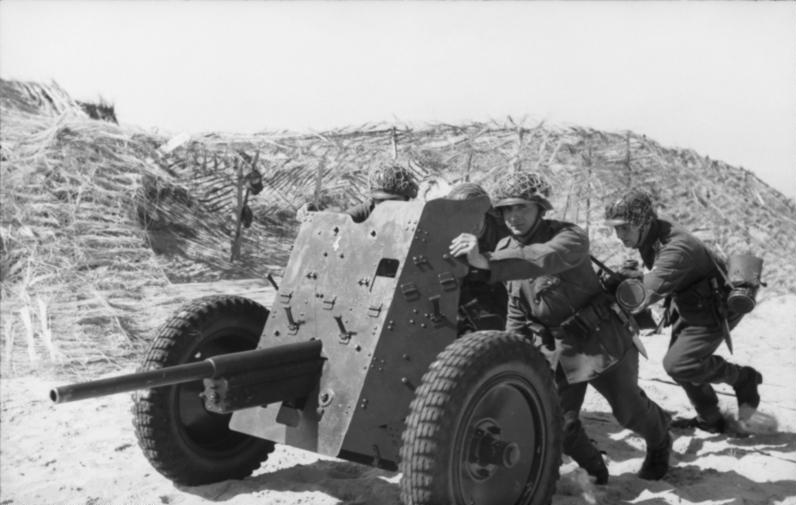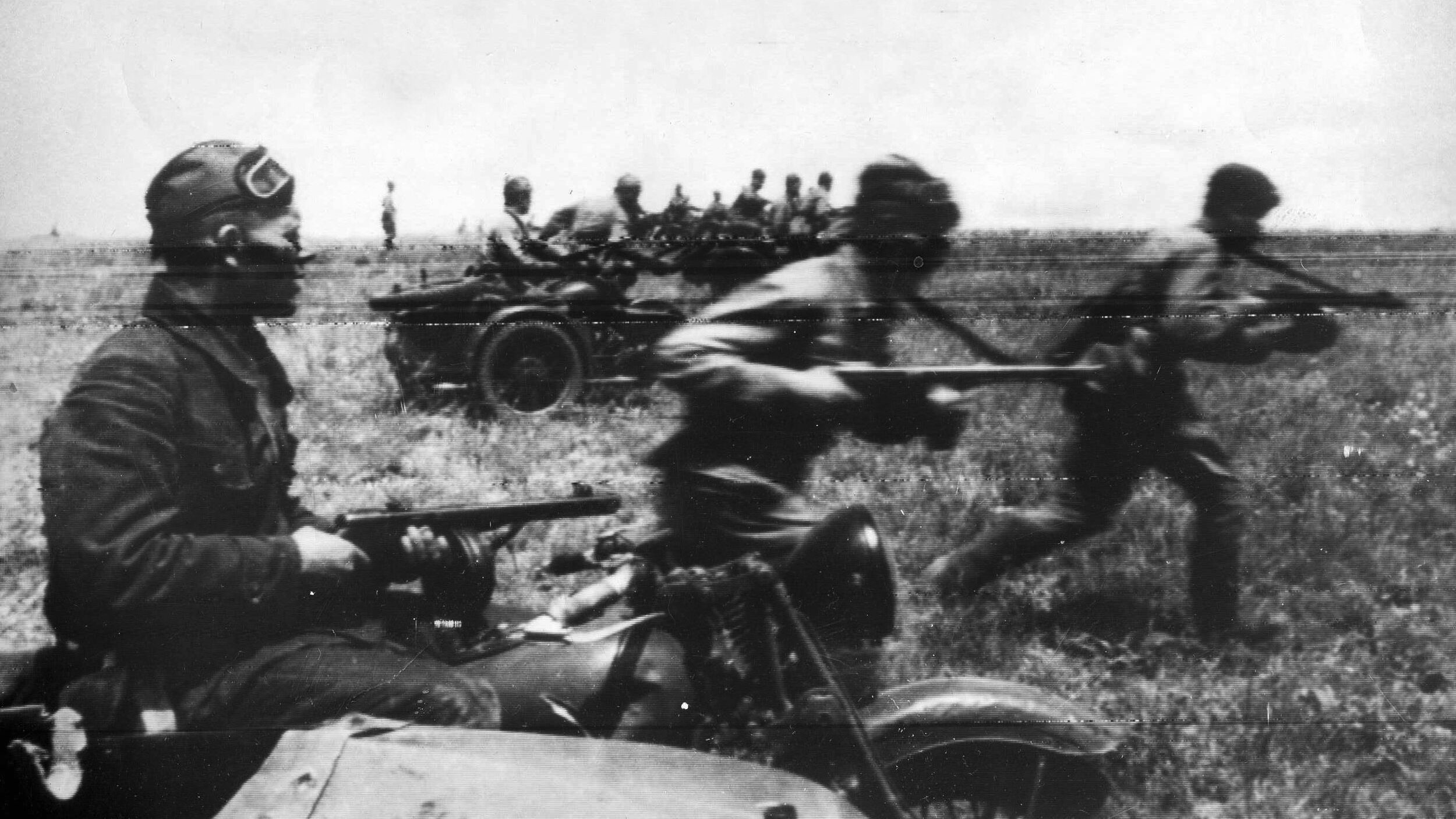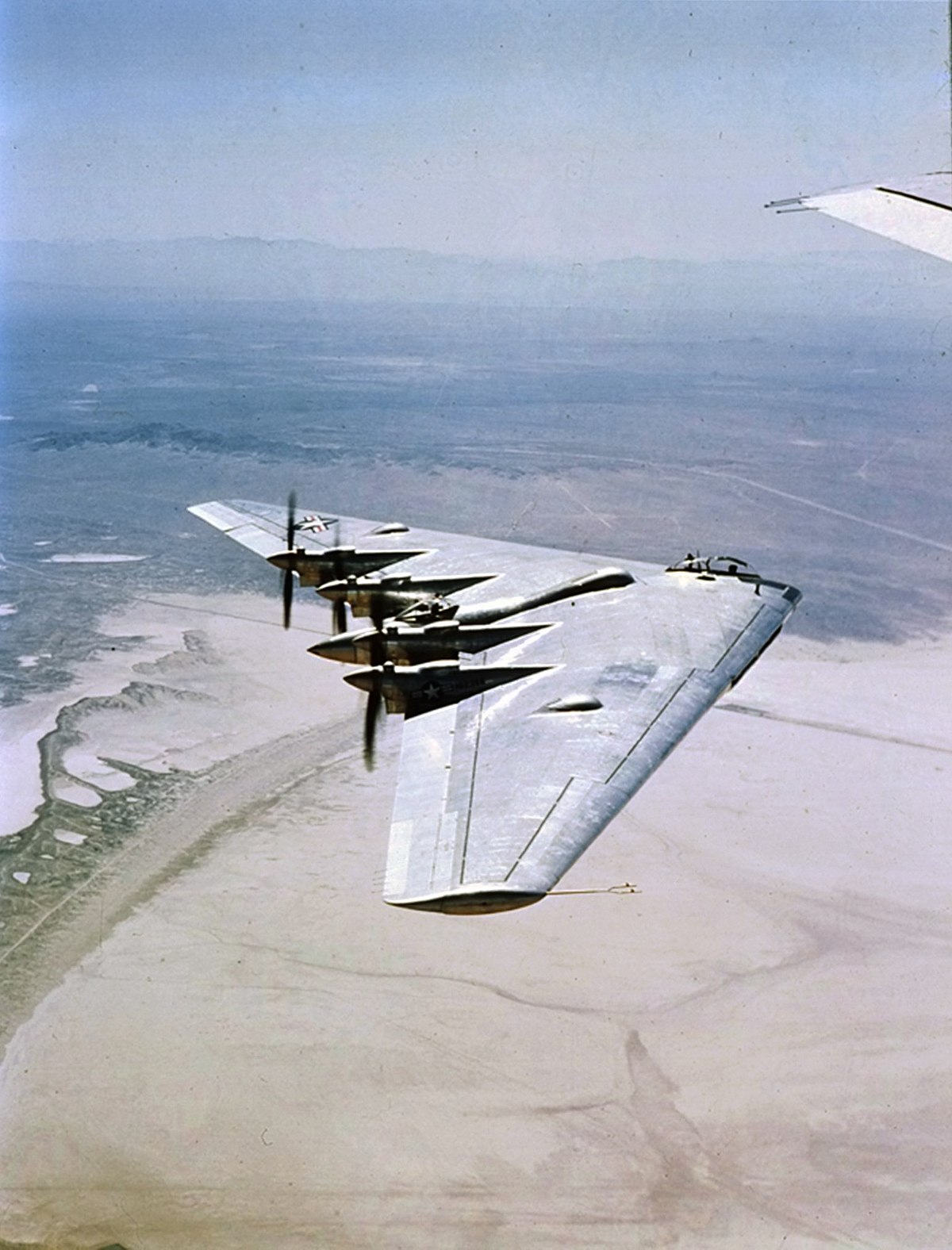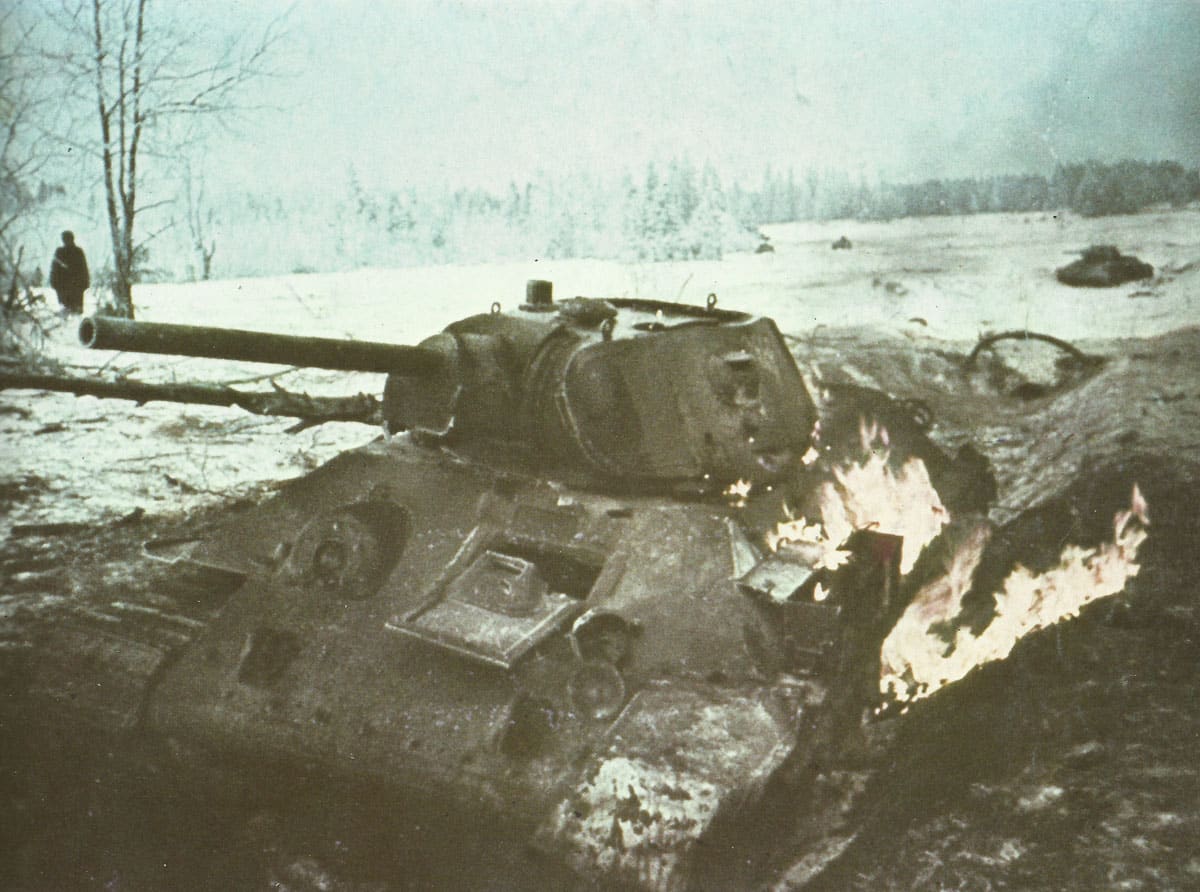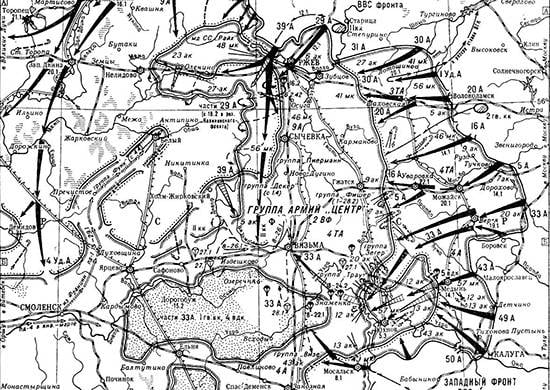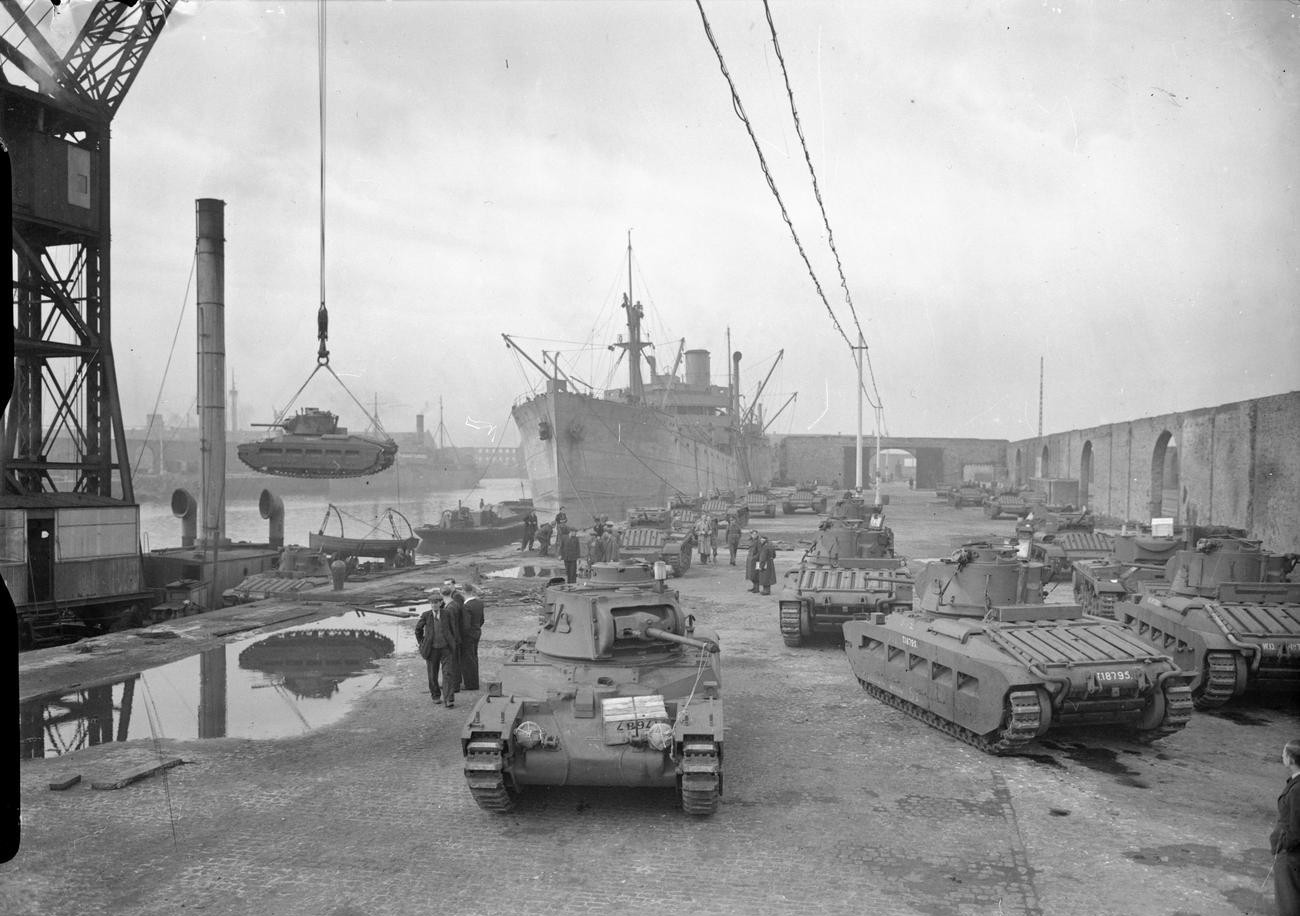I'm no suggesting more traditional direct-fire artillery. Tanks are much less vulnerable in this role.
Ok. Agreed, but tanks are much more expensive than a 76mm field gun or infantry gun doing the same job.
Tank crews are highly trained too; RKKA loses fewer of them in my sub-ATL.
Not really if you've read about how training for T-34s went. Which also explains why casualties were so insane for the tank arm. IOTL 300,000 out of 400,000 were killed. Not casualties, just killed. Wounded were on top of that.
I doubt they'd lose less with your tactics especially if it prevented breakthroughs.
What evidence that RKKA used less direct fire after 1942?
I'm speaking about artillery. For one thing the massing of fires after 1942 was quite a bit higher. Also by 1943 the war situation allowed for a lot more training and lower losses among the artillery arm.
The breakthrough of German tanks forced orders to use artillery in direct fire roles since 1941.
Again true for traditional direct fire arty, not really for tanks in this role.
There are still only so many places they could set up to fire on a target. And the more you mass the more juicy an artillery or AT gun target they are. It's a lot easier to spot tanks than dug in AT guns.
Are we sure this actually improved Soviet attrition ratios? I'm dubious. There's debate about attrition ratios in Stalingrad city fighting; it seems plausible that casualty ratios were just as unfavorable there as elsewhere.
It's easy to see why that might be: close-quarters fighting relies on devolved initiative and requires better communications to maintain C&C, relative to a wide-scope, set-piece battle. These conditions amplify German strengths. Chuikov's analysis assumes that German advantage lay in firepower rather than troop quality, which is extremely dubious.
Yes from the perspective of overall attrition. Artillery is the biggest killer as mentioned, so staying away from artillery and air strikes would reduce losses more than staying further from MGs; thing is Panzerfausts would be pocket artillery that can be direct fired and the danger zone for it is much less than even mortars, so they can be liberally used against infantry even in the open, but especially in urban areas and other close terrain without much issue...other than being spotted, but that is what your squad-mates are for: suppressive fire.
Do you have any stats for both sides about casualties in the city proper? I'd actually be very interested to know what the casualty rates were per week even.
The Soviets played a different card in Stalingrad: willingness to wear down enemy veteran infantry through attrition against a bunch of low quality, poorly trained recruits who were less valuable than the German infantry, which could not be replaced nearly as well (IIRC about 6:1 replacement were available to the Soviets in 1942) due to all the other fronts that the Germans were committed to, even occupation of relatively quiet areas to deter resistance and invasion by Britain.
The German advantage did lay in firepower in 1942, though individual initiative and combined arms training was a major force multiplier. In terms of artillery shell usage and quality of artillery and small arms the Germans were significantly ahead of the Soviets until 1944 IIRC.
Agreed but "damned if you do/don't" is kind of my point. I'm not saying you're wrong that PzF wouldn't be better for Germany, just that ultimately there are adaptations that retain something that is perhaps not decisively different from OTL - a qualitatively inferior RKKA retains options to prevail via inferior tactics and material preponderance.
My point was material preponderance wasn't possible due to the explosive shortage. Throwing men and tanks at the enemy was really the only viable option the Soviets had in 1941-43. Material only became less of a problem in 1944 thanks to Lend-Lease and other fronts siphoning off resources that would otherwise have been used in the East, while strategic bombing blunted German armaments.
But if there is much greater attrition (even 5% more each year is pretty friggin' bad for the Soviets) until 1944 when the material issues ease the vicious cycle has already wrought its damage on the Soviets so they are substantially weaker come 1944 when material makes it more possible to fight with less blood to achieve success. Especially if the Soviet advance was not nearly as good, because that means a virtuous cycle has been playing out for the Germans, who are now say 5-10% less bled out compared to OTL each year.
It wouldn't entirely negate PzF of course because, yes, sometimes the German will get a shot at Soviet tanks. But across the whole range of encounters a shift in Soviet tactics would ameliorate PzF's impact.
Right, but those mitigations will dramatically reduce the effectiveness of Soviet armor. And you're leaving out the anti-infantry and anti-bunker role the PzF played. Not to mention urban combat. RPGs today have much the same mission and are effectively the equivalent of a direct fire mortar (i.e. worth about 3 MGs) against infantry targets per operations research in modern conflicts.
Less aggressive Soviet armor prevents them from being decisive breakthrough weapons.
Yes - again not saying no impact. Just trying to be push your ATL forward by suggesting discrete outcomes and possible responses.
Understood and appreciated. I'm just arguing a position, not trying to say your position or arguments (even devil's advocate ones) are invalid or that I necessarily disagree.
You could argue, for example, that PzF nullifying operational freedom for Soviet armored spearheads after Stalingrad prevents the chaotic retreats from the Don in which much equipment and PoW were lost, and that this changes force ratios for Ostheer sufficiently to hold the Dniepr in 1943.
Indeed I would.
Then again, one could respond that if the Soviets don't break out into operational freedom after Stalingrad there's no backhand blow later and maybe there's a more methodical push to the Dniepr in 1Q '43.
Also quite true. But a methodical push would be more costly and slower, which is, for good reason, anathema to Soviet doctrine since it results in even higher losses.
My suggestion of a shift towards shells comes from freed tank production in one version of Soviet adaptation though. All they need is more explosives but the West seemed willing to answer their requests. In other words, it seems like SU could have had more explosives if they wanted that but instead they were focused more on armor OTL.
How much explosives do you think are freed up from tank shells ITTL? 76mm cannon shells don't have a lot. They could make more 76mm dual purpose cannon shells (divisional guns in Soviet infantry divisions) but those are at best suppressive fire and we get into the above argument if the Soviets were going to get into direct fire missions with those. They'd be better off with infantry guns if they were going to focus more on direct fire guns.
The US had a limit to what explosives they could contribute to the Soviets, because LL was also supplying the Brits (3x as much LL to them IOTL) and many other countries plus their own armies. So it is a zero-sum situation, who gets less of what to make more explosives for the Soviets and what are the Soviets giving up in hull space in transports for the displaced L-L?
More artillery means less exploitation and less exploitation means a much slower, more costly conflict, since it was the big Soviet pockets that actually got them the favorable casualty ratios and big bleed out of German forces. Plus there are diminishing returns with more artillery use.
Again I'm suggesting that Deep Battle was overrated and the Soviets might have been better served to stay within their core competencies - methodical battle applying material/numerical preponderance - rather than trying to demonstrate German-style operational flair.
Deep Battle is overrated overall, but in terms of it being the doctrine that was the best bet for the Soviets I think it was the least bad option for them. The big problem with it was the very poor use of it until 1944-45. The forces trying to implement it were not capable of carrying it out against the German forces of 1941-43.
Set piece operational advances were the Soviet wheel-house, they were not up for more free-form maneuver warfare. If they try the slow grind they'd never get to the 1941 border let alone win the war. Their economy was incapable of it, let alone their manpower, and even the US had economic limits to support them and was hitting some financial ones by 1945.

 en.wikipedia.org
What if instead of starting to work on the design in 1942 after experiences on the Eastern Front the French campaign instead causes the German army to ask for a cheap handheld infantry weapon to defeat tanks? This POD keeps the developmental history the same, but moves it up from summer 1942 to start in summer 1940. This would mean the first of the small Faustpatrone start entering combat in August 1941.
en.wikipedia.org
What if instead of starting to work on the design in 1942 after experiences on the Eastern Front the French campaign instead causes the German army to ask for a cheap handheld infantry weapon to defeat tanks? This POD keeps the developmental history the same, but moves it up from summer 1942 to start in summer 1940. This would mean the first of the small Faustpatrone start entering combat in August 1941. 
 en.wikipedia.org
en.wikipedia.org

